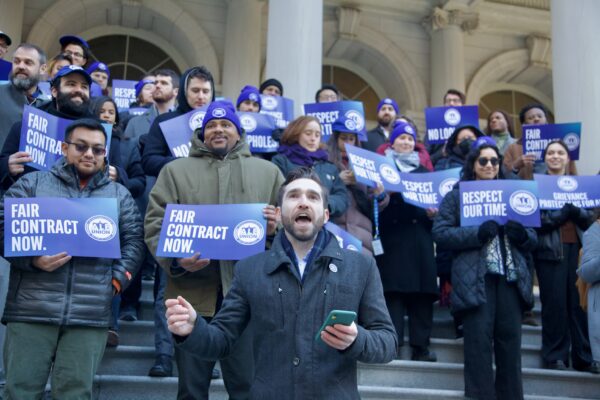Pensions Needed Now More Than Ever
October 17, 2011
By Larry Cary, Partner, Cary Kane LLP
Retirement pension plans have practically disappeared in private industry during the last thirty years. Today, pension plans are under sharp attack. Other than government programs, they are next to nonexistent. Unless we reverse this trend, and soon, our nation will see a future where the elderly are destitute. Much like the 19th century, retirement security will be measured by the willingness of children to support their older relatives.
Growth of Pension Plans
During the Great Depression of the 1930’s and in the aftermath of World War II, retirement security was on its way to becoming a reality for many Americans. Social Security became law in 1935 and monthly benefit payments started in 1940. Most people think of Social Security as a fund they make payments to that will be returned when they retire. In fact, each generation of workers pays for the retirement of their parent’s generation. The moneys contributed by active employees are used to pay the benefits of the current retirees.
In 1940, only about 15 percent of the private sector workforce was covered for a pension. During World War II pension plan coverage grew because of wage and price controls put in place to control inflation. Unions, which represented 35 percent of the work force, could not negotiate wage increases so they negotiated the creation of pension plans paying retirement benefits. This trend continued after the end of the war. By 1980, 80 percent of U.S. workers participated in a pension plan.
The growth of pension plans for public sector workers was equally dramatic. In 1920 Congress passed the Federal Employees Retirement Act, which for the first time covered every civil service employee of the federal government. By 1929 six states had a pension plan for civil service employees. Today, every state offers a pension plan to its employees.
Decline of Pension Plans
The last 30 years has seen a dramatic decline in retirement security. Compared to 1980 when 80 percent of private sector employees participated in a pension plan, as of 1998 only about 44 percent did. As of 2007, only 18 percent of private sector workers were actively participating in a pension plan. A real pension plan is described in the law as a “defined benefit plan,” meaning that it pays a guaranteed monthly benefit the rest of the retiree’s life. These plans have sharply declined in the private sector and have been replaced by “defined contributions plans,” like a 401(k), which do not provide a guaranteed income. Today, the average 401(k) balance is only about $71,000, which is inadequate to provide retirement security since many employees could be retired for 20 or 30 years.
Real pension plans declined in the private sector for a variety of reasons. One is that employer’s prefer to shift the risk of investment loss to the backs of employees. In a defined benefit plan a legally enforceable promise is made to the employee to pay a stated monthly benefit regardless of how well or poorly the assets perform in the plan. The employer must make up the difference if the market crashes. With a defined contribution plan the employee receives only what has been put into the account subject to the investment performance of the assets. If the market crashes, as it has done twice in the last ten years, the employer has no responsibility for making up the losses.
Another reason has been the loss of union density. Thirty-five years ago about twenty percent of the private sector work force was in a union. Today that percentage is down to less than 7 percent. Also, because real pensions are expensive they make up a significant portion of the employer’s labor costs. This can make it difficult to compete with non-union or foreign companies in an era of globalization.
The call to cut back or eliminate public sector pension benefits became a loud scream after the stock market crash of 2008-2009.
The crash has shown that most pension plans have been constructed with actuarial assumptions that are too optimistic. All pension plans calculate the funding of the promised benefits on the basis of how much money must be put into the plan along with an expected rate of return from investments. This has created a funding crisis of monumental proportions for both public and private sector pension plans because the calculation for paying for the benefit now requires ever increasing amounts to be put into the pension plan. Billions of dollars in increased contributions every year for many years now will be required to fund the plans.
In 2006 Congress passed the Pension Protection Act, which obligated both single employer and multi-employer pension plans to cut benefits and raise contributions to restore plans to financial health after the dot-com bubble burst in 2001. Unfortunately, most plan assets did not return to what they were before the bubble burst, when the crash of 2008/09 occurred. Many private plans will not recover. About half of the union sponsored multiemployer pension plans are slashing benefits for the next ten years as required by the Pension Protection Act. Many employees who retire this next decade will not have the pension they expected to receive.
The quality of the retirement benefit provided by Social Security has also dramatically declined. In 1983 the eligibility age was “stretched.” If born before 1939 you still get to retire with a full benefit at age 65. If born in 1960 or thereafter your eligibility to retire with a “full” benefit is moved back to age 67. Retiring earlier than 67 means your monthly benefit is greatly reduced. Unfortunately, there are calls again in Congress for action to trim social security benefits by either reducing the benefit or increasing the retirement age.
Time for a Progressive Tax Policy
It is important that public and private sector unions educate their members about the causes of the erosion of retirement security in America, and the need to solve this problem by funding social security and pension plans by making our tax policy truly progressive. The wealthy are not paying their fair share. They need to do so if retirement security for the majority of Americans is to be restored.
Larry Cary is a partner in Cary Kane LLP and has practiced pension law for nearly 30 years.



